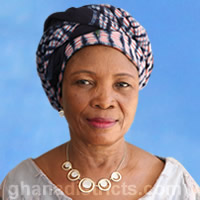Vegetation
The vegetation of the district consists of savannah wood land, with trees such as sheanut, Dawadawa, teak, kapok and mango – all economic trees. There are also tall grasses and shrubs. thorny species are also common. At a few places, flood plain, pond and clay, flat vegetation are found.
The natural vegetation in most parts of the district especially around the settlements has disappeared. What is seen today has resulted from the interference by man and animals through cultivation, grazing and exploitation for firewood. Beyond the major settlements the grasses are periodically burnt down especially during the dry season to clear the land of much of the vegetation. Grazing by animals has contributed to keeping the vegetation down.
These activities have an adverse effect on the oil texture and the environment in particular. Erosion is very likely which will affect soil fertility and the productivity of crops.
Soils
Soils of the district are predominantly light textured surface horizons in which sandy loams are common. Many soils contain abundant coarse material either gravel or stone which adversely affect their physical properties particularly their water holding capacity. The soils are generally very fertile for agriculture
The fertile nature of the soils also favour the growth of grasses and shrubs thus making the area favourable for the grazing of livestock
Drainage
The district is drained by, rivers such as the Black Volta, dams streams and dugouts which serve the numerous needs of human beings and animals.
Area/Population
The Bole District covers an area of about 4800 square km; out of the area of 70,384sq km of the Northern region. It has an estimated population of about 75,151 (2000 population projected) The population rate is about 3.6% per annum. The population is sparse with a density of about 14 per a km.
The District Capital Bole is the only biggest town in the district. Other major towns include Bamboi, Maluwe, Tinga, Tasilma, Mandari and Banda/Nkwanta. For the percentage land take of District and the Northern Region in relation to Ghana (238,533sq km), they are 2.0% and 29.6% respectively. This means that the land take of the district is 6.8% of the total land mass of the Northern Region.
Rainfall
The rains begin around May and end in October. The rainfall is seasonal and is characterized by a single maximum. The mean annual rainfall is about 1.100mm. The average rainfall is very small. June, July and August generally record the heaviest rainfall and also the greatest number of raining days.
The rainfall is characterized by thunder storms and some what erratic in nature. The variation between the rainfall days and the amount for the year 2004 and 2005 was not so much but the distribution for 2005 was not favourable for crop production.
Temperature
The district experiences extremes of temperature. The daily and annual range of temperature is wide. The coldest nights in the year are experienced in the months of December, January and February. During these months the air becomes dry and the atmosphere becomes hazy and one cannot see clearly due the fine dust in the air.
The day temperatures at this period are between 28 C and 40 C but under cloudless skies the night can be very cold with temperatures under 28 C. This is the period of the harmathan. Sudden rise in temperature is experienced in the months of March, April and May when temperature exceed 30 C.
The nights are usually hot and people prefer to cook, eat and sleep outside. When the rains start the mean temperature begins to fall again. There is another period in the year when after the rains temperatures rises again and there is a short hot season in November before the start of the harmathan.
Winds
Two dominant winds influence the climate of the Bole District. The rain-bearing winds that bring rain to the district from May to October are the south west winds from the Atlantic Ocean. From November to February, the harmathan period brings into the district the dry winds from the Sahara desert. These winds carry a thick haze of dust. The wind-borne dust is often thick enough to obscure the sun and affect visibility. A lot of irritation and discomfort is caused at this time of the year.
Date Created : 11/15/2017 1:27:29 AM




